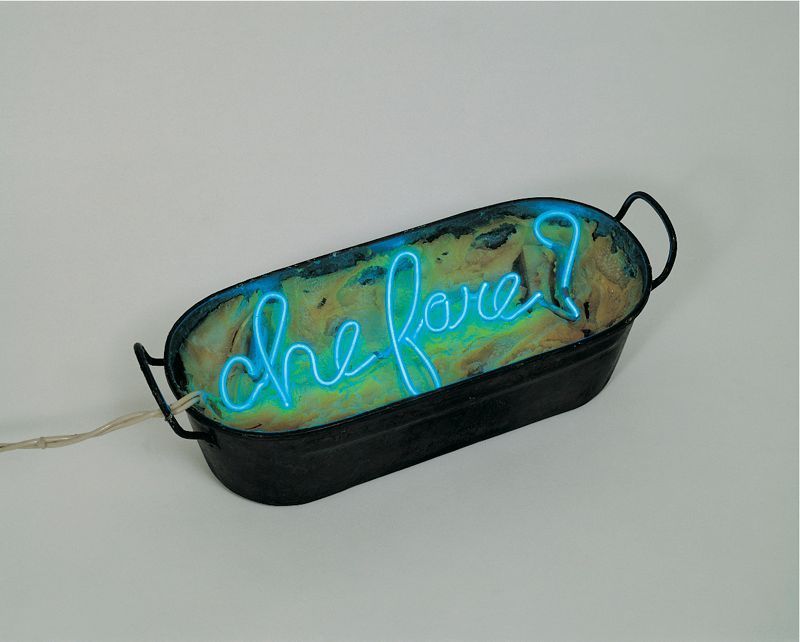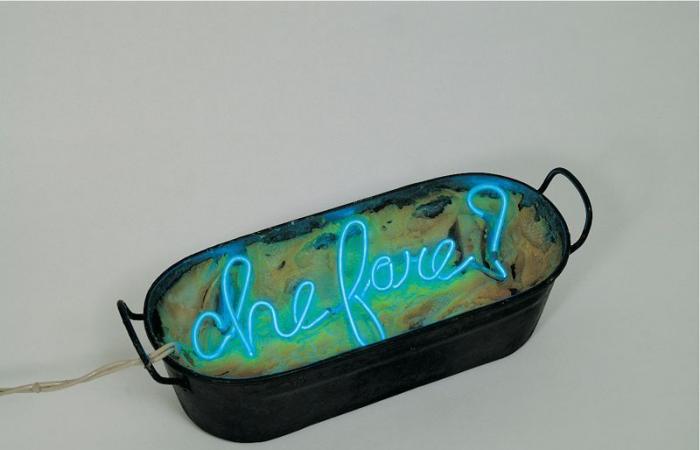Critics discuss two exhibitions: The Atomic Age at the Museum of Modern Art in Paris, an exhibition as artistic as it is scientific on the atom, its nuclear fallout and Poor Art at the Bourse du Commerce, a vast presentation of the anti-establishment Italian artistic movement born in the 1960s.
“The Atomic Age” at the Museum of Modern Art in Paris, when science mixes with the arts
The Museum of Modern Art in Paris offers to revisit the history of modernity in the 20th century through the imagination of the atom. The exhibition invites the public to explore the artistic representations sparked by the scientific discovery of the atom and its applications, in particular the nuclear bomb whose devastating consequences changed the destiny of humanity.
By bringing together nearly 250 works (paintings, drawings, photographs, videos and installations), as well as often unpublished documentation, the exhibition shows, for the first time in a French institution, the very different positions taken by artists in the face of scientific advances and the controversies they give rise to. Dealing with a subject that is more topical than ever, it is part of the museum’s desire to echo contemporary cultural and societal concerns.
Critics’ opinions
- Corine Rondeau: “The Atomic Age is a fantastic exhibition with a real research effort on the part of Julia Garimorth and Maria Stavrinaki, the exhibition curators. We don’t take the spectators for idiots, but we don’t lose them either. There is a real important iconographic work which makes us discover new works of artists who are already very recognized. The Bourse du Commerce offers a very important exposure to the present with a putting into perspective of the scientific positivism which has been established since the beginning of the 20th century and a highlighting of the false solutions which are sometimes proposed to us. The Atomic Age is a scientific – and not just artistic – exhibition of rare quality. The last part is a little less interesting, the one which deals with the militant part, despite its entirely necessary aspect.
- Sarah Ihler-Meyer : “It is a very successful exhibition, very dense, clear, educational and dynamic. It traces the history of the atom from its scientific discovery, to the fallout inspired by the terror of the two A bombs. The Atomic Age seeks to illustrate what we call the Promethean nuclear gap, that is to say the diffraction between the capacity to produce an A bomb and that of distinctly imagining the consequences of its explosion. We cannot comprehend the reality of the damage produced. The exhibition wonderfully illustrates this gap by moving quickly from the exaltation of the atom after its discovery, to the artistic transfigurations of the 1950s after the explosion of the two A bombs dropped a few years earlier on Japan. The last part of the exhibition clearly represents nuclear power and its entire production chain, stretching from the extraction of the ore to its final use.”
The Atomic Age – Artists put to the test of history is open to visitors from October 11, 2024 to February 9, 2025 at the Museum of Modern Art in Paris. The exhibition catalog is published by Editions Paris Musée. The exhibition is curated by Julia Garimorth, chief curator at the Musée d’Art Moderne de Paris and Maria Stavrinaki, professor of contemporary art history at the University of Lausanne.
“Arte Povera” at the Bourse du Commerce, a look back at the Italian protest movement

Although it is today considered an artistic movement, the actors of Arte Povera, refusing to play the game of assigning an identity, to let themselves be locked into a definition, reject the qualification of movement to prefer that of attitude. Be an artist Poor Artit is to adopt a behavior which consists of challenging the cultural industry and more broadly the consumer society, according to a strategy designed on the guerrilla model.
The Pinault Collection presents at the Bourse de Commerce in October 2024 a major exhibition dedicated to Arte Povera, designed by Carolyn Christov-Bakargiev. Between heritage and influence, the exhibition covers more than 250 historical, contemporary works and works from this major Italian artistic movement of the 1960s. This exhibition aims to shed light on both the Italian birth and the international influence of this movement, through the works of the thirteen main protagonists of Arte Povera.
Critics’ opinions
- Corine Rondeau: “The exhibition is organized in a kind of improbable jumble, with a set of monographic rooms where we spend our time reading carte after cartel. This does not really demonstrate what Arte Povera is, its frugality, despite the presence of all the big names of the movement I find that the exhibition struggles to demonstrate the heterogeneity of Arte Povera thought, its frictions, its reflection and the underlying anarchism which inhabits it. very bored. The spectator has difficulty moving around the exhibition, there is a devitalization of his experience, which does not really correspond, if at all, to the original idea of Arte Povera.”
- Sarah Ihler-Meyer : “We have the impression of seeing a safe open before our eyes, with very expensive objects inside. This exhibition illustrates well the irony and paradox of Arte Povera, but completely evacuates its context of emergence, the Italian political instability and the protest of the left and far left movements of the time. The scenography is not dynamic, it is a succession of rooms where we see inert objects. with a single market value, everything that the Arte Povera movement ultimately rejected.”
The exhibition is open to visitors from October 9, 2024 to January 20, 2025 at the Bourse du Commerce. Its catalog is published by Dilecta and available in bookstores. The exhibition is curated by Carolyn Christov-Bakargiev, an internationally recognized specialist in the Italian artistic movement.
Sound clips
- Chanson – The java of atomic bombs by Boris Vian, 1955
- Archive of Mario Merz’s voice taken from the show Poor Art – Radio creation workshop broadcast on France Culture on 10/12/1986








